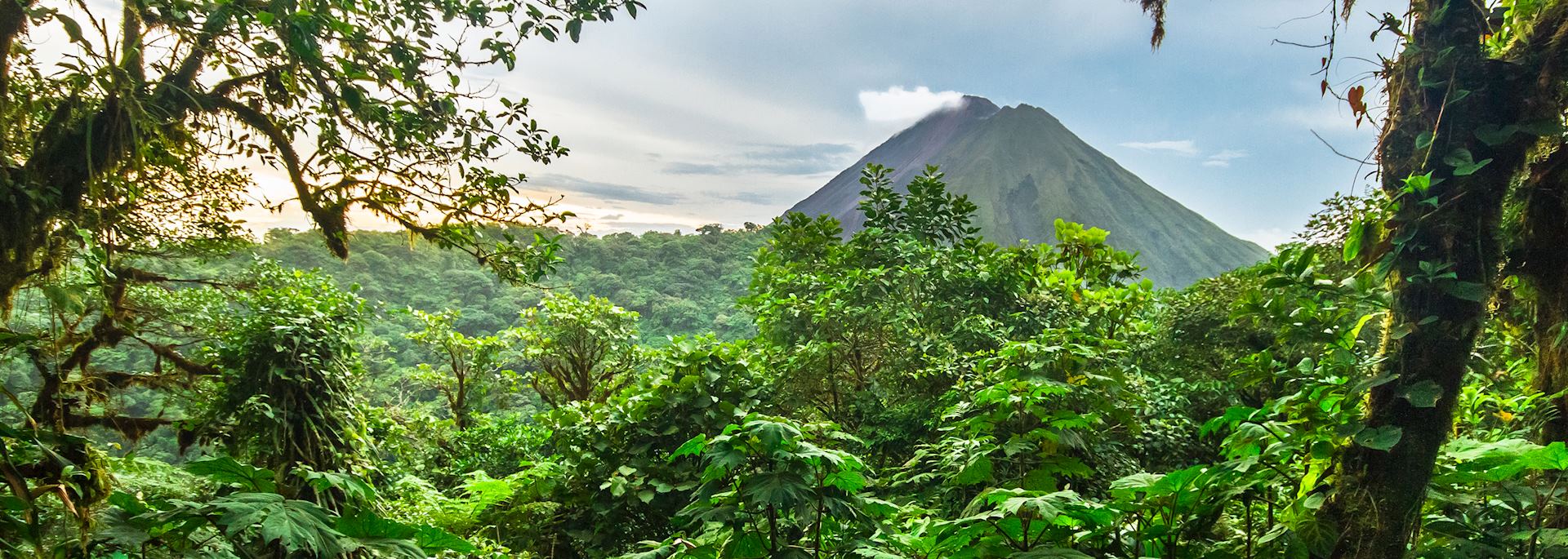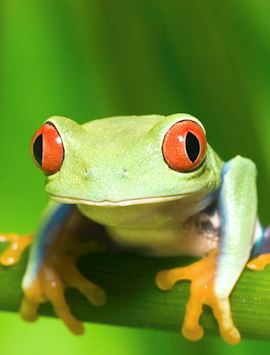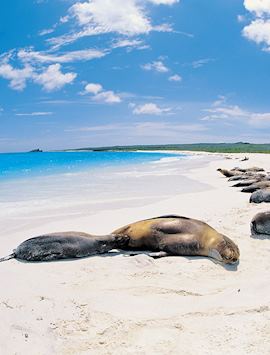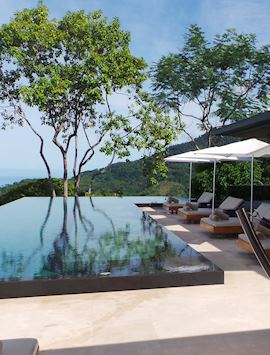By Costa Rica specialist Michael
Costa Rica suits honeymooners who don’t like to sit still for too long. If that’s you, then read on. You’ll find a good choice of places to stay — from safari-style glamping to ecolodges extraordinaire — that all provide peaceful retreats, often with luxurious touches. But, they also give you access to plenty of activities (not just the ubiquitous zip-lining) and wildlife-watching opportunities.
And, as a bonus, many of the places you’ll stay in work actively to support local communities and leave a minimal impact on the environment: Costa Rica has always been ahead of the curve when it comes to sustainability.
I’ve homed in on some of the places and activities that might particularly suit honeymooners, loosely in keeping with this Costa Rica adventure honeymoon trip outline — which you can tailor to your requirements.
White-water rafting (and relaxing) at Pacuare Lodge
A two-hour drive from San José (where you’ll fly into), Pacuare Lodge is an eco-property hidden amid a protected rainforest reserve in the Talamanca Mountains.
‘Hidden’ isn’t a figure of speech in this instance. The buildings meld into the trees (not one was cut down to accommodate the hotel), with their palm-leaf roofs made by Cabécar Indians, who live nearby.
Many of the staff employed by the lodge hail from local communities, and the lodge works hard to earn its eco-credentials: shower water is solar heated and all toiletries are biodegradable.
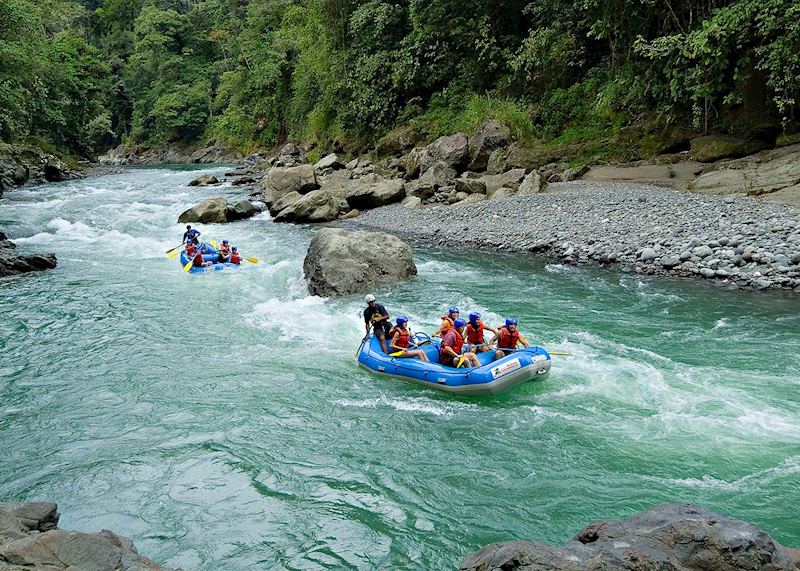
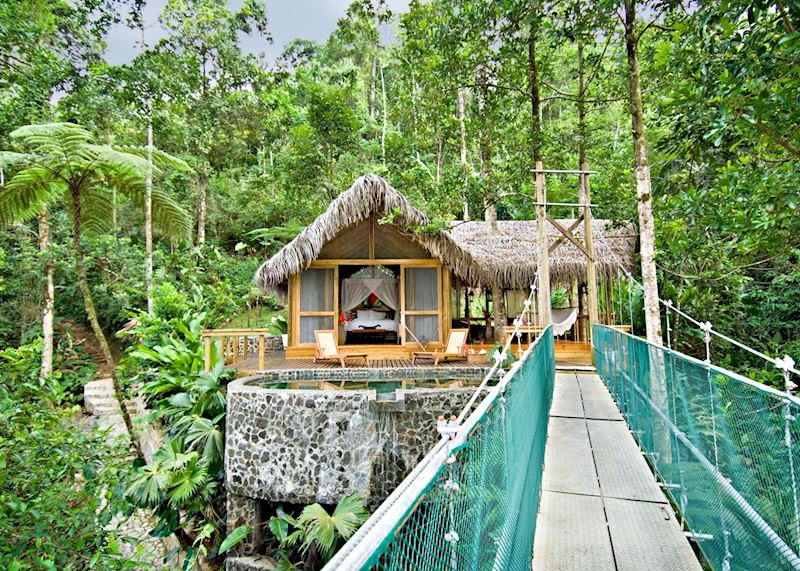
Come nightfall, candles and storm lanterns glow in your room and the pathways around the lodge, rather than electric lamps. All this energy saving only adds to the atmosphere, especially when the rainforest starts waking up around you, and you can only hear the susurration of the river and the calls of nocturnal birds.
Getting there is part of the experience: the only way to this lodge is by white-water rafting. You drive two hours from San José to get to Siquirres, where you’re kitted up and given a safety briefing before you clamber aboard your raft. Your luggage is sent separately by road.
The rapids you negotiate are ranked as Grade 1 and Grade 2. I’ve found that they provide enough spills and spray for a dose of adventure, yet they’re not too intimidating for first-timers. The journey takes between 45 minutes and two hours.
Once you’ve made your suitably dramatic entrance, things get a lot more relaxed (if you wish them to). The lodge has a spa and an infinity pool, while each room has a private deck.
For even more seclusion, the honeymoon ‘Canopy Suite’ with its four-poster bed is only accessible via your own suspension bridge. You can also opt to dine on a candlelit private platform suspended in a ceiba tree.
The lodge has a menu of adventurous activities you can take part in — zip-lining, kayaking, horse riding or more rafting.
For something even more out-of-the-ordinary, hike through the rainforest to a Cabécar rancho (thatched house) to meet the son of a zutkia (local shaman). He introduces you to his community’s uses for local medicinal plants and performs a ceremony using them, chanting prayers and mantras throughout.
The Arenal region: hanging bridges, organic produce, and hot springs
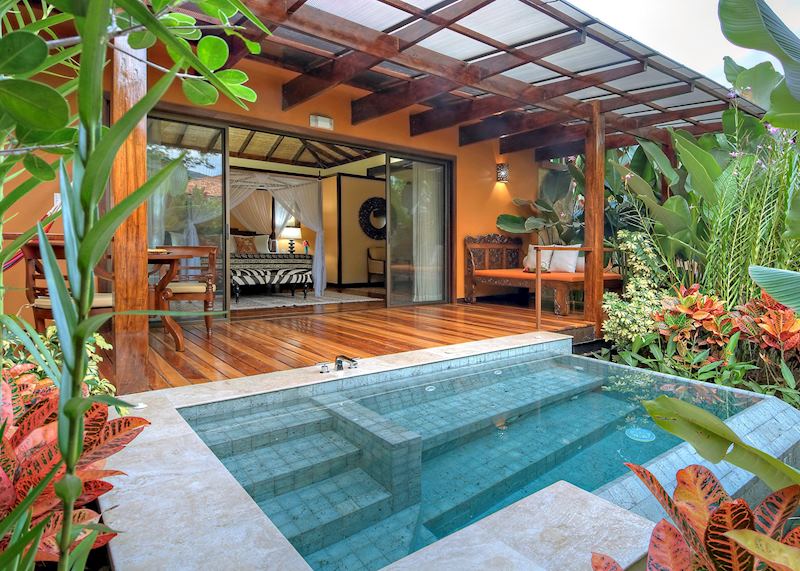
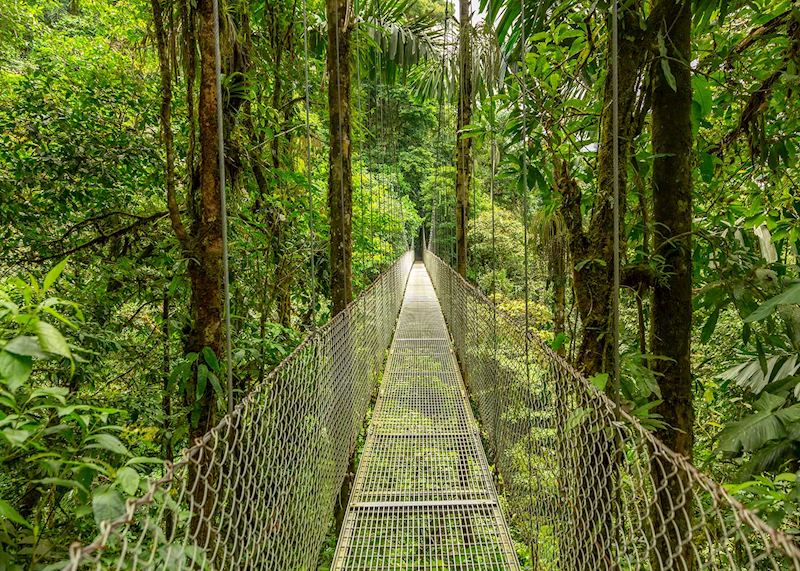
Three hours’ drive northwest from Pacuare Lodge brings you to Arenal, a dormant stratovolcano surrounded by cloudforest, baize-green pastureland, lakes, rivers and hot springs.
It’s acquired a reputation as a bit of an adrenaline-seekers’ playground, and admittedly the hotels here can feel a bit mass-market and resort-like. But you can get a lot out of this region as a honeymoon couple if you know where to stay and what to do.
Nayara Springs is the exception to the rule. A boutique, adults-only property, each room is fronted by a private, hot-spring-fed plunge pool, and the place itself has lots of fun touches, such as an espresso bar with freshly roasted coffee available daily.
Think of the hotel as your base for several activities and day-long trips exploring the area.
If you’re not content with your plunge pool, you can visit the large hot springs complex of Eco Termales, praised for its mineral-rich waters. It feels more private than other complexes.
I’d then make a beeline for Proyecto Asis, a wildlife refuge which cares for monkeys and sloths and other native animals who can’t be rehabituated into the wild. You can spend an afternoon volunteering here, helping to prepare the animals’ food.
Gourmet couples could visit a local organic farm. You’ll help harvest local produce (which you’ll dine on later), try coffee chorreado (cotton-filtered coffee) and observe the working life of the farm — such as seeing the greenhouses where cacao, peppercorn and peanuts are dried.
I encourage you to take an early-morning walking tour of Arenal’s hanging bridges. You’ll follow your guide across a series of walkways suspended high in the cloudforest canopy. Between 6am and 6:30am is the optimum time — you might see (as I did) green macaws and flycatchers fluttering across your path.
Beach time at Esterillos

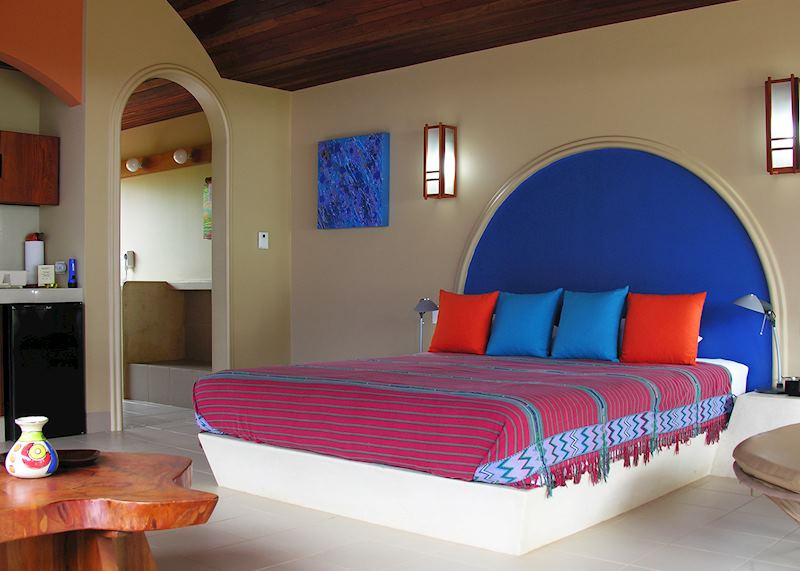
If your heart’s set on spending some time decompressing on a beach, I’d do this in the middle of a honeymoon, saving the Osa Peninsula (more on that, soon) for the finale ultimo.
Costa Rica has a choice of two coastlines and various good (if busy) beaches. For a real retreat, I’d go to Esterillos, a four-and-a-half-hour drive from Arenal. It’s a small town with little more than a couple of sodas (restaurants), but its beach has silky grey sand that’s lined with palms and dotted in places with shallow rockpools.
You could stay at Alma del Pacifico. There are beachfront bungalows, and the hotel is decorated in cheerful lilacs, yellows and sky-blues.
Glamping on Isla Chiquita
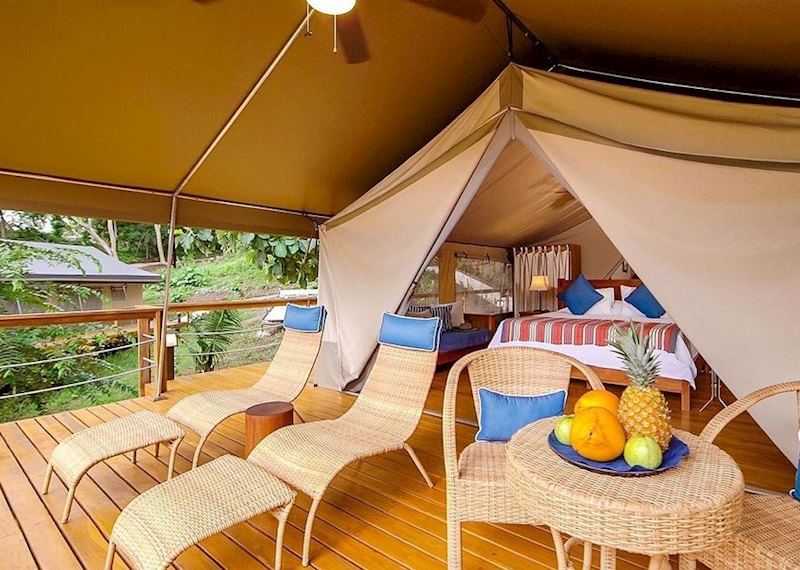
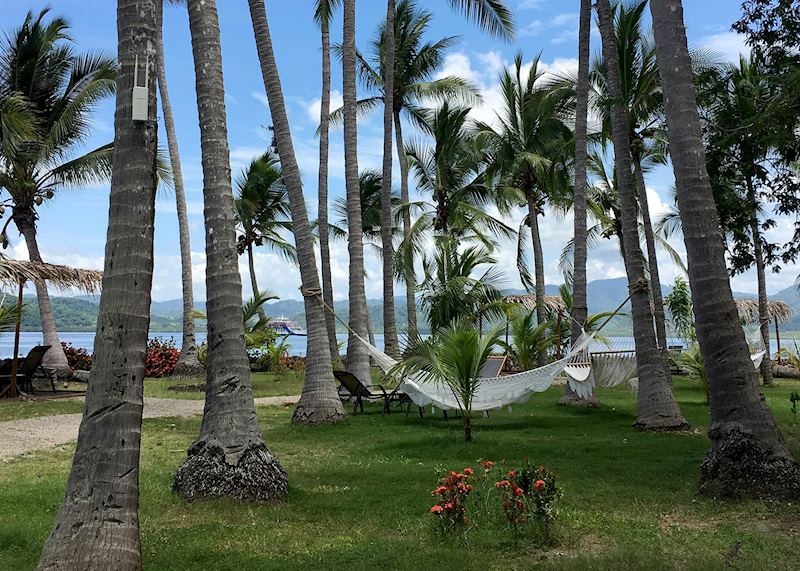
If you like your beaches to have more of a castaway feel, you could spend a few days glamping in the Nicoya Peninsula. Getting there requires patience. From Arenal, you take a private car transfer to Puntarenas, which takes three and a half hours. You then take a 45-minute ferry to Paquera, then a short boat ride to reach Isla Chiquita.
It mimics a luxury safari camp. In your tent, you’ll find a king-size bed, fresh clean linen and several mod cons, and you’ll have access to hot water (heated through solar panels). All food is locally sourced. The tents are set up on removable decks, which causes little disturbance to the beach environment.
The dry forest in the surrounding reserve is untamed. The sand is a rich shade of molasses, hammocks are strung up between palms, and the sea calm enough for paddleboarding. You can also go kayaking, fishing or take a sunset cruise.
If you do nothing else, take the evening bioluminescence tour by kayak. A guide will paddle out with you to show you this phenomenon close-up. Twirl a hand in the water, and it’s as if you’re painting the blazing gold and blue swirls of Van Gogh’s Starry Night sky.
Wildlife-spotting and horse riding in the Osa Peninsula
The Osa Peninsula is a pendulum of land in Costa Rica’s southwest, an off-the-grid backcountry of primary and secondary rainforest and mangroves giving way to the wild Pacific.
Because it’s harder to get to (you’ll take a flight from San José, then a transfer, then a bumpy 4x4 ride), not many visitors to Costa Rica make it this far south — but this also means that the rainforest here is at its most pristine, the wildlife at its most prolific.
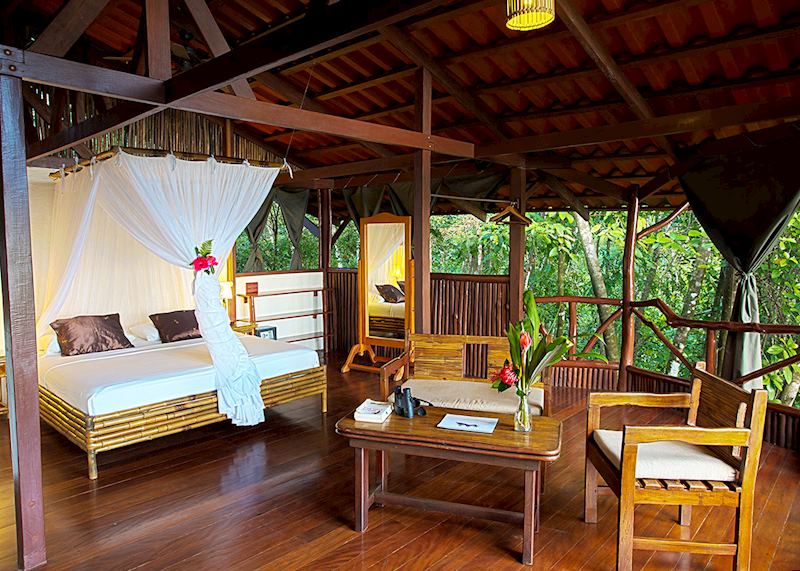
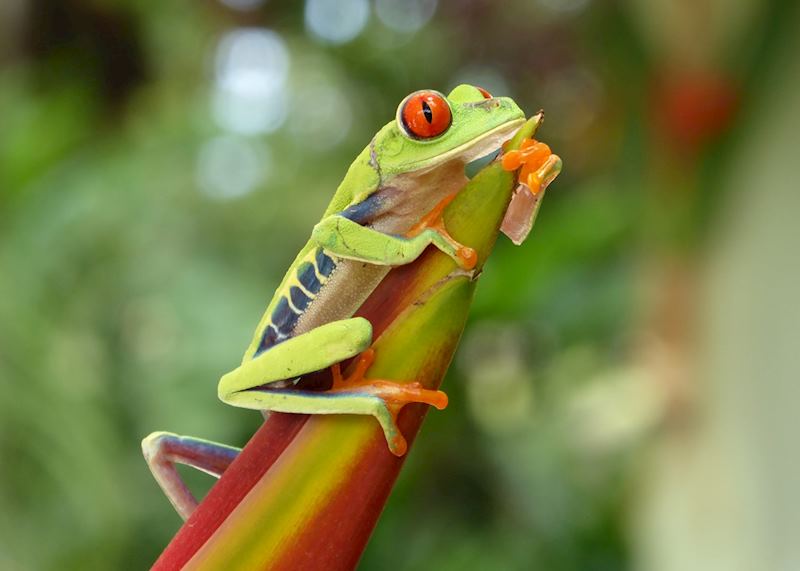
There are many excellent ecolodges in the Osa, all equipped with the best naturalist guides in the country. The accommodation may challenge your budget, but if you can, try and finish your honeymoon here. At El Remanso Rainforest Wildlife Lodge, for example, every room has a view of the rainforest canopy in the foreground, with the endless-seeming expanse of the ocean behind it. You’re treated to wide-angle, tangerine sunsets every night.
You can pick and choose from a huge menu of tours, walks and guided experiences, many of which are included in your stay.
The horse riding here is a particular treat. You start inland, at a farm, then ride along a deserted beach, right in the scurf, before looping back through the rainforest to your start point. When I did this, I got to ride a very fine criollo horse.
Nocturnal wildlife walks are a real highlight, too, and a more unusual take on wildlife-watching. You’ll meet your guide just before dusk, and begin tripping through the rainforest on a rocky, mud-splodged trail.
As the light is fading, all sorts of crepuscular creatures start going about their business. Armed with an infrared torch (so as not to disturb wildlife), your guide might point out insects, frogs and birds (such as a row of murmuring upside-down bats).
Cicadas up their volume, while a startled agouti might sprint across your path. You have a good chance of seeing the poster child of Costa Rica’s amphibians here: tree frogs. I remember giving an involuntary intake of breath when my guide lifted some foliage to reveal a strawberry poison dart frog resting on a moist leaf.
You can read more about nocturnal walks in our guide to wildlife-focused trips to Costa Rica.
Best time to honeymoon in Costa Rica
Try to go during the dry season (December to May), being mindful not to coincide with school breaks in January, Christmas and Easter if you’d like a quieter experience.
Read more about trips to Costa Rica
Start thinking about your experience. These itineraries are simply suggestions for how you could enjoy some of the same experiences as our specialists. They're just for inspiration, because your trip will be created around your particular tastes.
View All Tours in Costa Rica